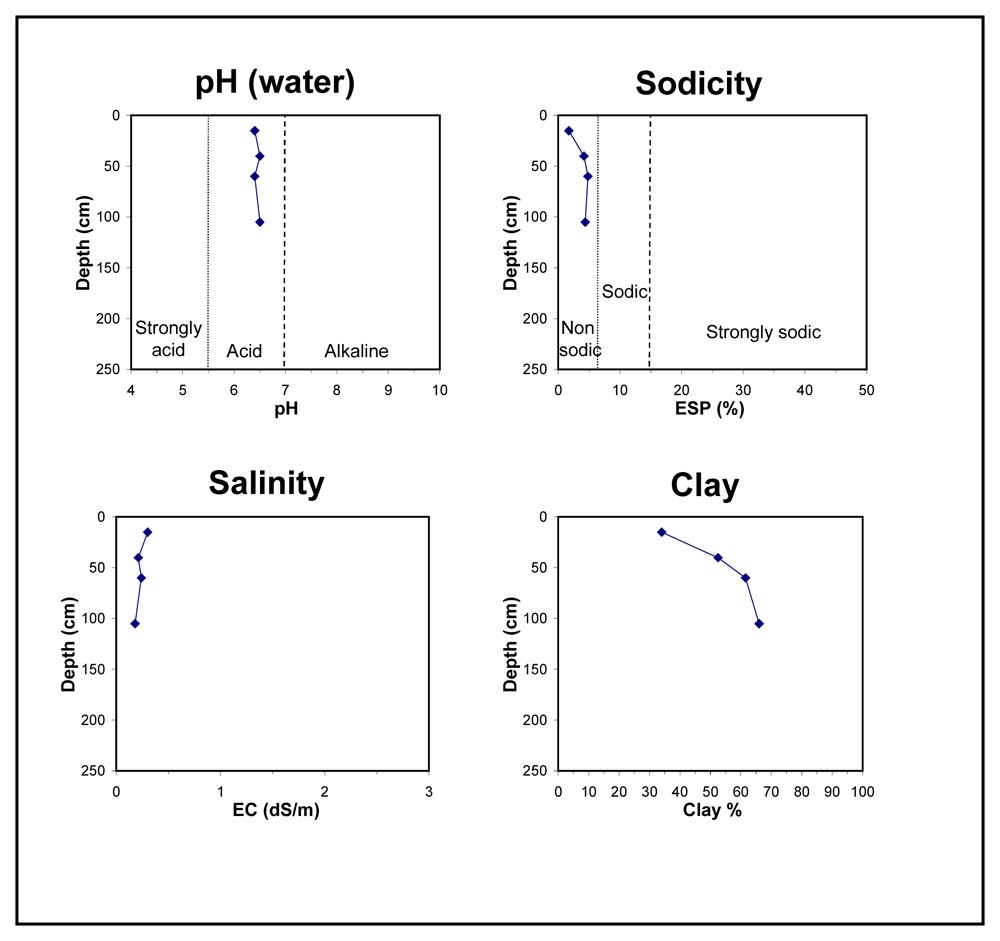GL54
| Site: GL54 | Land Unit: Gorae Basalt |
| Aust. Soil Class.: Mottled, Eutrophic, Red FERROSOL | |
| General Land Unit Description: This soil type occurs in isolated patches between Portland and Dartmoor. It usually occupies small areas in between pockets of less productive soil (Ferric Brown Chromosols). The Chromosols have been used to represent this area as they are deemed to be the major soil type, and due to restrictions of scale this soil type has not been mapped as an individual unit. It must be noted however, that this soil type has a higher capability of supporting a range of land uses (e.g. viticulture) due to its favourable physical and chemical properties. |
Site Description:
| Slope: 4% | Geology: Quaternary basalt |
| Landform pattern: Gently undulating plan | Position in landscape: Crest |
| Internal drainage: Well drained |
Soil Profile Morphology
| A1 | 0-25 cm | Dark brown (7.5YR3/3) sandy clay loam, strong polyhedral structure (2-5 mm), firm consistence when dry, few small subrounded ferruginous and manganiferous nodules (2-5 mm), pH 6.4; transition to: |
| Subsoil | ||
| B21 | 25-50 cm | Reddish brown (5YR4/4) light clay, many very faint red mottles, medium (5-10 mm) to strong polyhedral structure (2-5 mm), strong consistence when dry, a few small subrounded ferruginous and manganiferous nodules, pH 6.5; transition to: |
| B22 | 50-110 cm | Reddish brown (5YR4/4) light clay, many prominent red weathered basalt inclusions, medium to strong polyhedral structure (5-10 mm), strong consistence when dry, pH 6.4; transition to: |
| B3 | 110+ cm | Brown (7.5YR4/4) light clay, many prominent red weathered basalt inclusions, medium to strong polyhedral structure (5-10 mm), very firm to strong consistence when dry, pH 6.5. |
Key profile features:
- High in free iron
- Well structured soil




